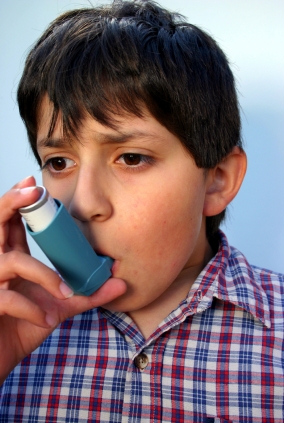Asthma: Breathing Made Easy with Homeopathy
One of the best ways to treat your asthma is with homoeopathy. The correct remedy can avert an acute crisis, while ongoing treatment will work to clear the condition completely.
In this in this article we will explore:
What is Asthma?
Asthma is a disease that intermittently affects the lungs. When it strikes, the lungs become inflamed and the airways narrow. The sufferer’s chest tightens, breathing becomes difficult or wheezy, and a persistent cough may develop – especially at night.
Asthma can be triggered by allergies or have its onset from a stressful period of life such as an infection, a grief, or even the birth of a baby. Thousands die from asthma each year. It is a serious disease that is increasing in frequency.
For children and adults alike, the struggle to breathe during an asthma attack can be a frightening experience. While conventional medications relieve many of the symptoms of asthma, they cannot cure it. With homoeopathy, it is a different story.
Causes of Asthma
Researchers have identified the following as either causing or having strong links to the development of asthma:
- Caesarean sections,
- Vaccines,
- Antibiotic use in early life,
- Paracetamol (Panadol Or Tylenol) use in early life,
- Family history of asthma.
Asthma Triggers
The major triggers for asthma include:
- Poor or polluted air,
- Tobacco smoke, well
- Emotional stress,
- Cold air,
- Exercise,
- Upper respiratory tract infections (head colds and sore throats),
- Exposure to things that provoke an allergic response.
Side-Effects of Conventional Treatments
Conventional asthma medications are split into two main groups. One group dilates the constricted airways (bronchodilators) while the second group reduces inflammation.
Both groups consist of medicines that can either prevent or relieve asthma. They may be prescribed for short-term or long-term use and can be either swallowed or inhaled.
Those that are inhaled usually have fewer side effects because they work directly on the lungs. Those are swallowed affect the whole body and so produce a greater range of side-effects.
What all of these medicines have in common is that they only ever manage the symptoms of asthma, never cure them. Knowing that, let’s look at their side effects:
Inhaled bronchodilators: These medications are marketed as being relatively safe and effective. Side-effects, such as an increased heart rate and muscle shakes, usually wear off with time so are classified as minor problems. Overuse of these medications has been known to worsen asthma and increase the possibility of death.
Tablet or liquid bronchodilators: Systemic bronchodilator medications such as theophylline affect the whole body rather than just the lungs and so have a greater number of unpleasant side effects. These include: mood and behavioural changes; increased urination; allergic reactions; confusion; diarrhoea; dizziness; sleeplessness; nausea and vomiting; tremors; irregular heartbeats; and persistent headaches. Theophylline blood levels should be checked regularly to ensure the proper dose is being taken.
Inhaled anti-inflammatories: Again, because this type of corticosteroid medication is delivered straight to the lungs, side-effects are less common than when corticosteroids are taken orally. The main side-effect is yeast (thrush) in the mouth and throat leading to pain and hoarseness. The growth rate of children can also be slowed by this medication, especially if overused.
Tablet or liquid anti-inflammatories: Systemic corticosteroid medications are prescribed to reverse severe episodes of difficult-to-control asthma. They have serious side-effects, especially when used for long periods of time. For this reason they are only used as a last resort and for as short a period as possible. Side effects include:
- Mood swings or depression, especially in children,
- Increased appetite and weight gain,
- Fattened, ‘moon’ face,
- Thinning of the skin,
- Restlessness and hyperactivity,
- Sleep disturbances,
- Heartburn and indigestion,
- Easy bruising,
- Worsening or triggering of diabetes,
- Osteoporosis (brittle bones),
- Cataracts of the eyes,
- Muscle weakness,
- Reduced resistance to infection,
- High blood pressure,
- Impaired growth in children.
The good news is that by treating your asthma with homoeopathy all of the above side-effects can be avoided and your asthma symptoms are far more likely to reduce over time and clear completely. Let’s hear from two men who are currently being treated for their long-term asthma.
Story 1
I’m 25 years old and have been struggling on and off with asthma my whole life. Even as a child I was hospitalised a few times.
I’ve persisted with many different asthma medications and preventatives that doctors offered me but with very little success and many side effects.
I decided to give Homeopathy a try, even though I’ve always been quite skeptical about natural medicine. But as traditional medicine had proven to be ineffective I thought anything was worth a try.
Now after four short months of Homeopathy treatment my asthma is the best it’s been in a long time.
I’m quite an active person and where I was needing to take my Ventolin with exercise, I’m finding, as my Homeopathy continues, I’m now not needing it as much anymore.
I’m so happy with the result. I’m now so confident about using Homeopathy.
Mr M. J.
Lisarow, NSW, Australia
Story 2
I have been an asthma sufferer for the last 20 years of my life. I had resigned myself to the fact that it could only ever be managed with the steroids of orthodox medicine which was the sum total of treatment available. Then I met my wife. She has a keen interest in natural therapies, and in health in general, and suggested I try homeopathy.
The symptoms I had before I started treatment were:
- Regular asthmatic wheezing that worsened every time I got a cold or chest infection
- Hayfever
- Eczema on my legs and body
As mentioned, my asthma was being treated by orthodox means. I used a preventative medication called Symbicort (a combination of corticosteroid and bronchodilator), and a reliever medication, Ventolin. Various creams were used for my eczema depending on how bad it was. They ranged from natural Teatree based ointments to stronger steroid based creams. I also used standard antihistamines to relieve my allergies.
I had a constitutional homeopathic consultation following which a remedy was prescribed. The results were swift and marked. Within a month I had stopped taking my preventative medication of my own accord – I had always been concerned about its harmful effects on my body. I soon found that I rarely needed to use my reliever medication as well. Prior to my homeopathic experience I would rarely go anywhere without my reliever being close by. Now, I no longer have a hoard of Ventolin and Asmol inhalers stashed away for emergencies, and only use them if I fall ill.
My eczema cleared and hasn’t been seen again, and my hayfever became so mild that it was barely noticable, whereas before it was particularly noticeable to both me and anyone else around.
I can’t express how amazing, non-invasive and liberating my homeopathic experience has been in regards to my asthma to date.
Mr N.T.
Tuggerah. NSW. Australia.
Self Help Tips
Lifestyle Matters
De-stress your life. Strong emotions can trigger asthma. Reduce your stress and anxiety by improving your relationships, making sure you take time to relax, and writing down your worries.
Exercise has mixed benefits for asthma. Exercise is important but while studies show it improves your ability to breathe in, they also show that it doesn’t reduce the number of wheezing episodes or improve your ability to exhale the air.
Vitamin D is essential for a healthy immune system which in turn reduces the frequency of asthma. Each time the sun shines on your skin, vitamin D is produced. Make sure you spend time outdoors each day with, where possible, at least your arms and legs exposed to the sun. Take care that you don’t burn.
The hygiene hypothesis. Children’s immune systems develop by fighting off viruses and bacteria. Keeping their environment super-clean interferes with this development, making them at greater risk of developing asthma. In other words, a little bit of dirt never hurt anyone.
The vaccine conundrum. Research 1 234 shows that vaccines are strongly linked to asthma so it would be wise to carefully consider the true risks of epidemic and infectious diseases according to the country in which you live. Be aware that healthy development of the immune system depends on the body being exposed to childhood diseases. Homoeopathic immunisation can also be a safe option should you wish to avoid the risks associated with vaccines.
Food That Helps
Fresh fruit and vegetables improve asthma. Study after study shows that diets low in fruit and vegetables increase the risk and severity of asthma so remember; always eat at least seven serves of fresh fruit and vegetable a day.
Tomatoes contain large amounts of lycopene, an antioxidant that reduces asthma symptoms when eaten regularly. Lycopene is concentrated in sauces and cooked tomatoes with raw tomato providing smaller amounts.
Raw honey contains bee pollen and propolis, both of which have anti-allergic, anti-inflammatory, and expectorant properties – plus it improves immune system recovery. An open jar of raw honey placed under the nose of someone suffering an asthma attack can help them breathe more easily. As a preventative measure a teaspoon of raw honey can be either eaten or mixed in a glass of warm water and taken three times a day.
Garlic is a well known natural antibiotic. It contains a mixture of compounds that have antibacterial and antifungal effects. It also reduces lung inflammation that accompanies asthma. It was once thought that garlic had to be eaten raw to obtain these benefits, but it is now known that cooked garlic works just as well.
Ginger can break up the mucus that builds in the lungs and contributes to asthma – but it must be fresh. Make a ginger tea by combining two cups of boiling water with two tablespoons of shredded ginger Drink a cup of the tea once every two hours when asthma is a problem.
Turmeric, among other things, is a natural anti-inflammatory that helps asthma and eczema. For best results drink one teaspoon of turmeric mixed into juice three times a day on an empty stomach.
Peppermint can soothe the airways and break up mucous. Add a few drops into a bowl of steaming water and inhale. being careful not to burn yourself. Note: peppermint is a well known antidote of many homoeopathic remedies: avoid this tip if you are already using homoeopathy.
Caraway or fennel seeds can also break up mucous. Add caraway seeds to a bowl of hot water and use as a steam inhalation. Fennel seeds can be chewed or eaten raw.
Fish and fish oils rich in omega 3 fatty acids reduce inflammation and improve allergies such as asthma, especially if the ratio to omega 6 fatty acids has been unbalanced by a diet heavy with foods such red meat, pork, dairy products and polyunsaturated oils.
Help Me!
The following three measures can be used during a severe episode of asthma if you are caught without your regular medication and cannot access immediate medical help. Apply them while waiting for an ambulance.
- Bowen Technique: In a severe asthma attack, the large breathing muscle that divides the chest and the abdomen (the diaphragm) goes into spasm, making it difficult to breathe outwards. To relieve this spasm, find the bottom of the breast bone (the sensitive end of the sternum between the ribs), place your thumb in the soft hollow 2-5 cm (1-2 inches) below the end of the sternum and press about 2-4 cm (1 – 1½ inches) inwards and upwards towards the diaphragm. Then firmly pull the thumb downwards to release the spasm so the person can breathe again. If you are not successful the first time, repeat the procedure.
- Coffee contains a substance that is similar to the active component in many asthma medicines. Studies show that a good strong cup of coffee will dilate the airways to make breathing easier. Use it following the Bowen technique to further reduce the asthmatic spasm.
- Homoeopathy not only treats chronic asthma but can rapidly relieve its acute episodes if the right remedy is chosen. Consider doing a first-aid or home use course in homoeopathy to help you learn the basic remedies and when and how to use them.
Show Me the Research
Homoeopathy has consistently been effective in the treatment of asthma and other allergies in studies and double-blind, randomised, placebo-controlled trials. Let’s take a look at a few of them.
Study One: A 1998 study involving 63 adults and children with asthma showed that of those given the homoeopathic remedy, 97% improved, 2.6% worsened, and 87.2% reduced their use of conventional medication. In contrast, of those given a placebo (dummy medicine), 12.5% improved, 16.7% stayed the same, and 70.8% worsened. None who received the placebo reduced their use of conventional medication. 5
Study Two: A 1997 study of 40 asthma patients who were dependent on corticosteroid drugs showed that during the course of the study, those given the homoeopathic remedy reduced their use of corticosteroids and experienced greater improvement in their asthma than those who were given the placebo. 6
Study Three: A 2006 Norwegian study of 200 patients suffering hypersensitivity illnesses, including asthma, showed that homoeopathy was at least as effective as conventional treatment but with none of the side effects. Those who received homoeopathy also reported a greater improvement in overall physical and mental-emotional health than those who did not. 7
Treat your Asthma with Homeopathy
Homeopathy should be the treatment of choice for asthma and other allergies. It is safe and effective for babies through to the elderly. It is important to note that asthma is a chronic complaint best treated by a qualified homeopath. While some remedies discussed in this article will be found in many home-use kits because they can also treat a range of acute problems, the successful treatment of asthma frequently needs potencies and changes of remedies beyond the scope of a home kit and prescriber. For the best results please use the services of a fully qualified homeopath. The homeopathic remedies needed for asthma also vary according to the symptoms of the sufferer but some of the main ones are listed below.
Many of the following remedies are found in home-use kits.
Antimonium Tartaricum (Ant-t.)
Key Symptoms: Rattling breathing and wet sounding cough with mucus that is hard to cough up. Want to be fanned. Breathlessness worse for heat.
Supporting Symptoms: Especially useful for young children or elderly patients. Irritable and want to be left alone. Do not want to be examined or touched. Weakness. Occasional expectoration of small amounts of yellow, sticky mucus.
Comments: This is a remedy for many complaints that are accompanied by difficult breathing. While it can be indicated at any age it is frequently needed at the extremes of life – i.e., infancy or old age. The person may be drowsy or lethargic its. The respiration will often be rattling but there will be difficulty in coughing up the mucus that is obviously present. Breathing may become so difficult that the person can be bluish and sound as though they are about to suffocate. In severe cases heart failure may be present. Ant-t is also a remedy that can be used during cholera and chickenpox when indicated by the symptoms.
Arsenicum Album (Ars.)
Key Symptoms: Wheezing may be present but the cough will be dry. Asthma from cold air. Asthma worse for lying; must sit upright or bent forward to breathe.
Supporting Symptoms: Asthma triggered by dampness, cold food or drinks, or watery fruit. Wheezing from allergies to cats, smoke, or dust. Thirsty for sips of warm drinks.
Comments: One of the most common remedies for acute asthma. The person will be restless and anxious, and symptoms are usually worse between midnight and 3 am. At times, the restlessness will lead to exhaustion. They will feel chilly and better for warmth, and feel better for sipping warm drinks. Those who need Ars. constitutionally are likely to be nervous, anxious, critical, and afraid of being alone. They are often perfectionists, have to keep things meticulously tidy, and can be hard to please. Burning sensations that feel better for warmth and often accompanied they are problems. Headaches however will be relieved by cold applications.
Grindelia (Grin.)
Key Symptoms: Dry asthma. Wheezing may be present but the cough will be dry.
Supporting Symptoms: Chronic bronchitis. Rattling respiration. Expectoration of profuse sticky mucus improves asthma. Suffocating sensation on falling asleep. Sleep apnoea. Breathing improved by sitting or standing.
Kali Bichromicum (Kali-bi.)
Key Symptoms: Asthma with sticky or stringy mucus. Breathing better if coughing up mucous. Cough worsened by eating.
Supporting Symptoms: Asthma often dissociated with bronchitis, sinusitis, or postnasal dripping. Wheezing during sleep.
Comments: These patients feel cold, and get sick after being chilled. Despite this, they feel worse in summer. They get mucous membrane infections, mostly in the respiratory tract. The mucous will be gluey, thick, stringy and sticky. It may start out clear and then turn white or green, and can cause ulceration. Pains can appear in many parts of the body, can migrate quickly, and can be precisely located (the patient can put a finger on the spot where the pain is). They may suffer from ulcers, including stomach ulcers.
Nux Vomica (Nux-v.)
Key Symptoms: Allergic asthma. Symptoms worse at 4am or on waking in the morning.
Supporting Symptoms: Asthma may be a associated with digestive complaints. Asthma triggered by cold air. Asthma worsened by eating. Asthma improved by warm drinks. Asthma from overindulgence with alcohol, food, or recreational drugs.
Comments: The first remedy to look at for hangovers, nausea and vomiting. Patients tend to overdo both work and play. They can work long hours and then have trouble sleeping at night due to business anxieties or nervous exhaustion. They will overindulge in food, alcohol, and stimulants (especially coffee), and may regret it later – as with a hangover. They can be irritable, short tempered, nervy and do not suffer fools gladly. They are at their worst in the morning or in cold weather. They tend to be neat and tidy, and expect the same from others. Pains may be cramping and spasmodic. Their stomach may feel heavy and sensetive to pressure. They are also very sensitive to smells and light.
Phosphorus (Phos.)
Key Symptoms: Asthma from upper respiratory tract infections (head colds) that go down to the chest. Asthma with coughing and wheezing.
Supporting Symptoms: Asthma worse from lying on the left side – may improves on lying on the right side. Hoarseness with asthma. Tickling and irritating cough. Asthma from odours (even flowers) and fumes.
Pulsatilla Pratensis (Puls.)
Key Symptoms: Asthma from allergies. Asthma worse for warm, stuffy rooms and better in the open air. Asthma with thirstlessness.
Supporting Symptoms: ‘Juicy’ or green mucus with asthma. Asthma better the cold air or air conditioning. Breathing better for sitting propped up. Asthma with conjunctivitis and itchy eyes. Asthma from cats. Asthma worse at night.
Comments: Patients will be clingy, needy, sensitive, emotional and shy. Often they will have blue eyes and blond hair, and are likable. They can whine and be irritable, and are most often women or children. They are also very sensitive and can be hurt by even slight criticism. They may be chilly or warm-blooded, but in either case can’t stand stuffy rooms and feel better for fresh air. Discharges are bland, thick and yellow or green. Their emotions can change quickly and unexpected, as in from tears to laughter in a matter of minutes. They bend easily, and crave sympathy and attention from others, and make friends easily.
Many of the above remedies are found in home-use kits.
References
1 (Research from the University of Manitoba, Canada, in 2008, showing a relationship between vaccines and asthma. Primary information on this research appears to have now been removed from the public domain)
2 http://www.ageofautism.com/files/denmark_vacc_vs_unvacc_results_survey.pdf (A 2004 Danish study contrasting the difference in health and chronic disease between 635 vaccinated an unvaccinated children).
3 Golden I. The Potential Value of Homœoprophylaxis in the Prevention of Infectious Diseases, and the Maintenance of General Health in Recipients. 2005. Swinburne University Press, Melbourne.
(Study showed vaccinated children were 15 times more likely to develop asthma than unvaccinated children).
4 http://www.impf-report.de/jahrgang/2005/06.htm (A List of studies, in German, implicating vaccines with asthma incidence)
5 Riveron-Garrote, M, “Ensayo clinico aleatorizado controlado del tratamento homepatico del asma bronquial,” Boletin Mexicano, 1998,31:54-61.
6 iMatusiewicz, R, International Journal of Biological Therapy and Integrated Medicine, “The Effect of a Homeopathic Preparation on the Clinical Condition of Patients with Corticosteroid-dependent Bronchial Asthma,” 1997,15:70-4.
7 Launsø L, Kimby CK, Henningsen I, Fønnebø V. An exploratory retrospective study of people suffering from hypersensitivity illness who attend medical or classical homeopathic treatment. Homeopathy (2006) 95, 73-80.








